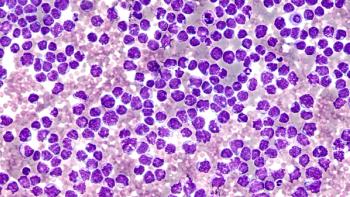
Joint Statement Released on Managing Hyperglycemia in Type 2 Diabetes
Patient preference should be considered because medications don't work if adherence is poor, the experts noted.
Ongoing access to diabetes self-management education and support (DSMES) and promoting good medication adherence are among the keys to managing hyperglycemia, or high blood glucose, in patients with type 2 diabetes (T2D), according to a joint statement from the European Association for the Study of Diabetes (EASD) and the American Diabetes Association (ADA), released this week at the EASD annual meeting in Munich, Germany.
The statement was published in Diabetologia, the official journal of EASD, and in Diabetes Care, the official journal of ADA.
The experts who developed the consensus statement said that patient preference should be a major factor in driving treatment choices, because their preferences for the delivery method—such as a pill vs an injection—or things like side effects or cost could have an impact on adherence. And if patients don’t take medications, they don’t work, regardless of what evidence showed in a clinical trial.
The emphasis on giving patients more access to DSMES is key, because current reimbursement models, including those in Medicare, may limit the number of hours or points at which a patient can meet with a diabetes educator. A position statement from the American Association of Diabetes Educators, ADA, and the Academy of Nutrition and Dietetics called for education at discrete points in the life cycle of diabetes: (1) at diagnosis, (2) at annual assessments, (3) when new complications occur, and (4) during transitions in life and care.
While there are new digital diabetes management tools available, evidence shows that these work best when patients can combine them with contact with a trained professional (see our
Among other recommendations, the statement calls for:
- Advising overweight or obese patients with diabetes to start a lifestyle management program, including food substitution where appropriate
- Boosting physical activity to improve glycemic control
- Making metabolic surgery available to people with T2D who have a body-mass index (BMI) of 40 or above (or 37.5 and Asian ancestry) or a BMI of 35 to 39.9 (32.5-37.4 with Asian ancestry) who have comorbidities and do not achieve weight loss goals with non-surgical methods
- Metformin continues to be the first-line therapy, but for patients with clinical cardiovascular disease, a sodium glucose co-transporter-2 inhibitor (SGLT2) or glucagon-like-1 (GLP-2) receptor agonist with a demonstrated cardiovascular benefit is recommended
- For patients with chronic kidney disease or clinical heart failure and atherosclerotic cardiovascular disease, an SGLT2 inhibitor with proven benefits should be considered
- GLP-1 receptor agonists are the first injectable considered, except if type 1 diabetes is a possibility
Experts called for more research into combinations of glucose lowering therapies. “As cost implications for these various approaches is enormous, evidence is desperately needed,” the committee said
The committee said the giant cardiovascular outcomes trials raise important questions: do benefits, including renal benefits, extend to low-risk patients? If so, for which population groups?
However, the cardiovascular outcomes trials that have demonstrated unexpected cardiovascular benefits in T2D medications may be up for re-examination. A decade after their inception, FDA has scheduled a 2-day review of these giant studies on October 24-25, 2018. While there are certainly more choices in T2D therapy than ever, the need to examine each one for potential heart attack and stroke risks has substantially increased their cost.
“The management of hyperglycemia in type 2 diabetes has become enormously complex with the number of glucose-lowering medications now available,” the EASD/ADA panel said. While diet and exercise remain the foundation of good care, metformin followed by other medications based on individual patient comorbidities is recommended, “as we await answers to the many questions that remain.”
Reference
Davies MJ, D’Alessio DA, Fradkin J, et al. Management of hyperglycaemia in type 2 diabetes, 2018. A consensus report by the American Diabetes Association (ADA) and the European Association for the Study of Diabetes (EASD) [published online October 5, 2018]. Diabetologia. 2018; doi.org/10.1007/s00125-018-4729-5.
Newsletter
Stay ahead of policy, cost, and value—subscribe to AJMC for expert insights at the intersection of clinical care and health economics.













































